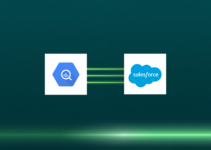Staying ahead of threats requires sophisticated tools and strategies. So, Extended Detection and Response (XDR) serves as a solution, promising to revolutionize threat detection and response capabilities across organizations. However, within XDR, two distinct approaches are distinct: Native XDR and Open XDR. Understanding the pattern of operation between these approaches is vital for organizations seeking to fortify their defenses effectively.
Deciphering the XDR Landscape
Extended Detection and Response (XDR) serves as a progressive evolution of traditional endpoint detection and response (EDR) solutions. Coined by industry leaders like Palo Alto Networks, XDR promises to change conventional security silos by providing holistic threat visibility and automated response capabilities. Despite its growing presence, defining XDR is such a difficult task, as various industry players offer disparate interpretations.
Open XDR architecture carries a significant distinction within the XDR, delineating the architectural approach towards integration and interoperability. At its core, XDR aims to address the limitations of traditional EDR solutions by combining a broader spectrum of data sources, including networks, cloud environments, servers, and endpoints. This expanded scope equips security teams with comprehensive insights into potential threats, enabling more effective mitigation strategies. However, within the XDR, there are concerns about the integration model and platform architecture, which gives rise to Native XDR and Open XDR.
Unveiling the Essence of XDR: Evolution Beyond EDR
Before examining the main differences between Native XDR and Open XDR, it’s necessary to understand the fundamental essence of XDR. XDR is rooted in the concept of augmenting endpoint detection and response capabilities and represents a shift towards proactive threat hunting and automated incident response.
Unlike its predecessor, which primarily focuses on endpoint activities, XDR casts a broader net, covering diverse data sources and telemetry streams.
XDR As EDR Extension: Fortifying Threat Visibility

Source: healthcareinfosecurity.com
XDR is often portrayed as an extension of traditional EDR solutions. Security vendors with substantial investments in EDR technology champion this perspective, aiming to amplify telemetry collection and threat detection capabilities across organizational infrastructures. By augmenting endpoint-centric insights with network traffic analysis, cloud workload monitoring, and email security telemetry, XDR empowers security teams with a panoramic view of security threats.
These platforms leverage a SaaS-based architecture to ingest telemetry from diverse sources, facilitating threat detection and automated response workflows. Through the amalgamation of machine learning algorithms and behavioral analytics, XDR enables proactive threat mitigation, minimizing the window of exposure to potential cyber-attacks.
XDR As SaaS-based SIEM Upgrade: Orchestrating Threat Intelligence
An alternative perspective frames XDR as a SaaS-based upgrade to traditional Security Information and Event Management (SIEM) solutions. So, XDR transcends the confines of endpoint-centricity, offering easy integration with numerous security and IT tools. Unlike the siloed nature of conventional SIEM deployments, XDR platforms serve as centralized hubs for telemetry aggregation, analysis, and incident response orchestration.
Furthermore, XDR is seen as a panacea for the operational challenges plaguing SIEM implementations, such as alert fatigue, limited contextualization, and manual response workflows. Solutions like Stellar Cyber Open XDR exemplify this approach, which prioritizes interoperability and extensibility in their architectural design. Moreover, by harnessing the power of standardized APIs and pre-built integrations, these platforms streamline the deployment and operationalization of XDR capabilities, empowering organizations to fortify their security postures effectively.
The Interplay Between Open XDR and Native XDR
The proliferation of XDR solutions is raising concerns about the integration models and platform architectures: Open XDR versus Native XDR. These divergent approaches embody contrasting philosophies regarding interoperability, vendor agnosticism, and deployment flexibility.
Open XDR: Embracing Interoperability and Flexibility

Source: venturebeat.com
Open XDR represents an integration-centric approach, which emphasizes interoperability with third-party security analytics tools and infrastructure components. Contrary to misconceptions, the term “open” in Open XDR does not imply open-source attributes but rather shows the platform’s capacity for easy integration with diverse ecosystem partners. Organizations opting for Open XDR leverage existing security investments while augmenting their capabilities through centralized threat detection and response platforms.
A notable example of Open XDR solutions is Stellar Cyber Open XDR. This platform prioritizes extensibility and compatibility, facilitating frictionless integration with numerous security tools and telemetry sources. By adopting an open architecture, organizations can preserve their existing vendor ecosystem while harnessing the collective power of diverse security technologies.
However, the efficacy of Open XDR hinges on the breadth and depth of integrations supported by the platform. Niche or specialized security products may encounter compatibility challenges, potentially bridging visibility gaps within the threat detection pipeline.
Native XDR: Consolidating Under a Unified Umbrella
In stark contrast, Native XDR serves a monolithic approach, wherein the XDR platform integrates seamlessly with the vendor’s proprietary security products and ecosystem. This holistic integration model eliminates interoperability concerns while offering a cohesive, all-in-one solution for threat detection and response. Native XDR platforms prioritize simplicity and streamlined operations, empowering organizations to consolidate their security stack under a unified umbrella.
These platforms leverage tight integration with the vendor’s existing product portfolio, ensuring easy data sharing and orchestrated response actions. While Native XDR offers a defined simplicity and cohesion, organizations must contend with potential vendor lock-in and limited interoperability with non-affiliated security solutions.
Strategic Considerations: Choosing the Right Path
With the numerous XDR solutions available, organizations must carefully evaluate their integration requirements, operational preferences, and long-term strategic objectives. The decision between Open XDR and Native XDR entails trade-offs in terms of interoperability, vendor lock-in, and deployment agility.

Source: thebossmagazine.com
Conclusion
For organizations prioritizing flexibility and integration, Open XDR can serve as an opportunity; by leveraging existing security investments and embracing interoperability, businesses can augment their defenses without disrupting established workflows. However, the efficacy of Open XDR hinges on the breadth and depth of integrations, requiring careful consideration of compatibility and scalability.
Conversely, Native XDR presents a streamlined path toward simplicity and cohesion. By consolidating under a unified ecosystem, organizations can get these operations and minimize complexity. Yet, the Native XDR is tempered by concerns about vendor lock-in and limited interoperability, necessitating a thorough evaluation of long-term strategic implications.
Ultimately, the choice between Open XDR and Native XDR is more than a mere technological consideration; it cuts across a strategic decision shaping the resilience and agility of cybersecurity postures.



